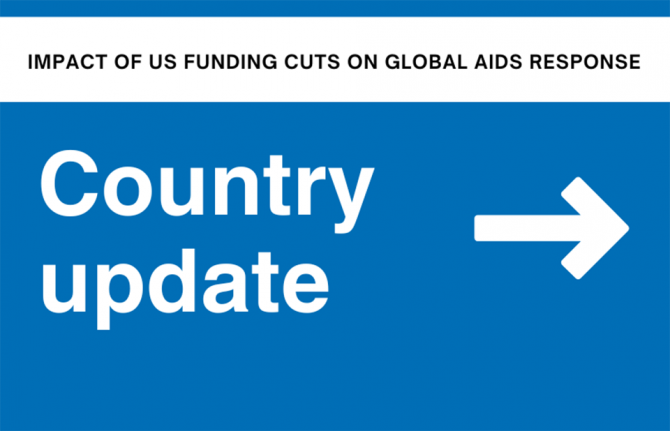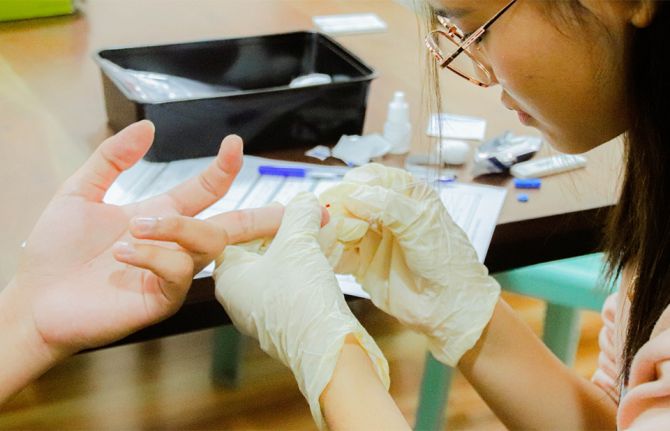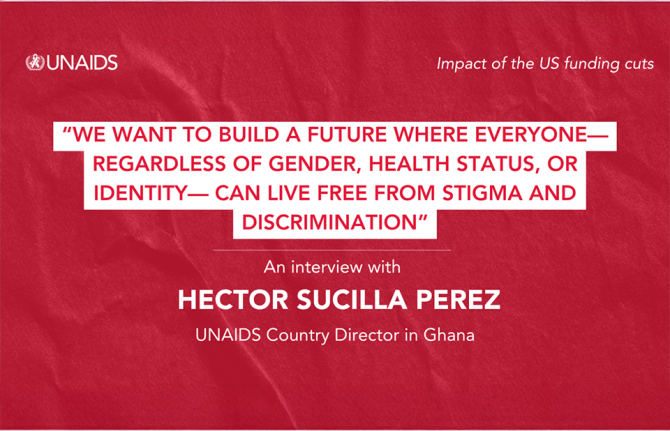

Feature Story
Impact of US funding cuts on HIV programmes in Kenya
01 April 2025
01 April 2025 01 April 2025Since the US cut their foreign assistance, the Government of Kenya has provided leadership to ensure continuity of HIV care at various levels, in consultation with different partners. Recently, the Ministry of Health, led by the Cabinet Secretary, convened high-level meetings with County Governors, the parliamentary Health Committee, Development Partners for Health and communities to discuss the impact of the US funding cuts and make recommendations.
In the meetings, the following were agreed/discussed:
- Establishment of a multi-sectoral monitoring and coordination committee to regularly monitor the impact and manage information and communication
- Seek emergency access to HIV/TB/Malaria commodities in-country and information on orders in high seas and manufacturers
- Seek emergency financing for identified gaps in commodities and HRH
- Mobilize county governments for re-purposing of entire health workforce to mitigate HIV/TB/Malaria service gaps and community initiatives
- Propose policy actions for Health Systems Resilience in the face of dwindling aid-based development funding for healthcare
- Seek consensus for policy reviews and pathways for mainstreaming and integration of vertically funded programs into public health service delivery mechanisms
Service Delivery
The country has witnessed resumption of HIV prevention and treatment services, however not at full scale. For instance, community prevention and treatment services such as community outreach services, peer led awareness and education and differentiated service delivery have been impacted. Additionally, sample networking for viral load testing and early infant diagnosis remains impacted.
Due to the unstructured and abrupt nature of the integration of HIV services into outpatient clinics, there have been reports of incidences of stigma and discrimination towards people living with HIV and key populations including fears of involuntary disclosure and lack of confidentiality.
Supply Chain Management System
The Government has assured it has adequate stocks of HIV health products and technologies in the country. The commodities that were running low at health facility level were flagged off for distribution by the CS Ministry of Health through USAID supported procurement agency (MEDS). The consignment included antiretroviral drugs, HIV testing kits, male condoms, early infant diagnosis and viral load testing reagents.
Strategic Information
The Kenya Health Information System (KHIS) that captures national aggregate HIV program data has been down due to the US funding cuts. This has hampered the availability of data for program reporting and other reporting processes, including GAM and mini-GAM (HIV services monthly reporting).
Civil Society and Communities’ Impact, Resilience, and Response
- Civil society and communities continue to convene to discuss the impact and develop mitigation strategies.
- Communities of PLHIV and Key populations, through their formal and informal networks, are offering peer led services such as counselling, treatment information, peer referrals and linkages to address the gaps.
- They have also led high level advocacy with the media that has influenced government decisions to address the impact of the Stop work order.
- Communities and Civil Society have played a key role in providing useful information, including lived experiences on the impact of the funding and services interruptions, that have been used by the international community to advocate for continued support by US Government.
- Communities have widened their resource mobilization efforts from non-traditional donors to sustain their initiatives that have been impacted by the Stop Work Order
UN Response
- UNAIDS is supporting communities in analysis and review of the community-led assessment tool to assess the impact of the funding disruptions on delivery of services.
- UNAIDS convened communities and civil society to discuss the funding disruptions and develop mitigation measures. The outcome of the meeting has led to the advocacy for the domestic funding and media engagements to influence actions by governments to bridge the gaps in HIV services as a result of the US funding cuts.
- UNAIDS provides technical assistance to communities and civil society on advocacy efforts as well sustaining interventions that have been impacted by the US funding cuts.
- UNAIDS supported the creation of compelling outputs from GOALS modeling to demonstrate the impact of funding shifts on new HIV infections and mortality based on prevention and treatment coverage scenarios which could result from the funding shifts. These outputs will be used to supplement ongoing advocacy efforts.
- Some of the UN agencies have initiated joint programing through co-funding initiatives to mitigate the impact of the US funding cuts.



